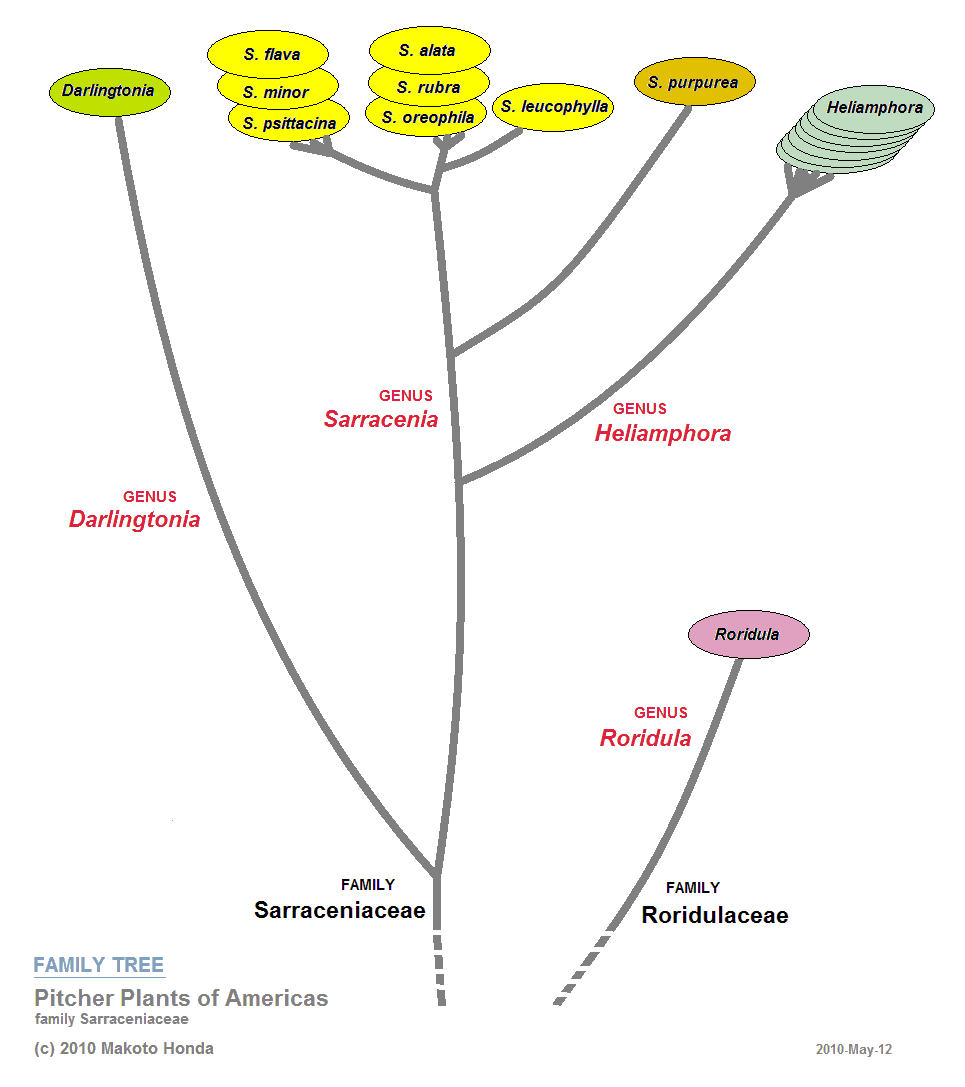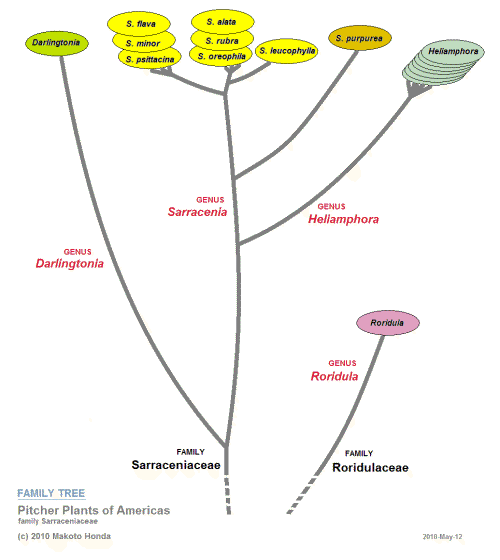FAMILY TREE -
Pitcher Plants of Americas (family Sarraceniaceae / order Ericales)

FAMILY TREE - Pitcher Plants of
Americas (family Sarraceniaceae / order Ericales)
Vertical distance of tree
branches in the above figure (not necessarily the branch length itself if the
branch is slanted) represents genetic change distance of the DNA sequence
fragments.
REFERENCE: Neyland, Ray and Mark Merchant. 2006.
Systematic Relationships of Sarraceniaceae Inferred from Nuclear Ribosomal DNA
Sequences. Madrono - A West American Journal of Botany, Vol. 53 (3): 223-232.
---------------
Neyland at al. (2006) conducted molecular systematics analyses of the family Sarraceniaceae.
Their study confirmed some previously reported molecular-based results that Darlingtonia is sister to a clade composed of Sarracenia and Heliamphora, suggesting that Darlingtonia had branched out early in the evolution of the family - considerably earlier than the departure of Heliamphora.
The study also suggests - strongly - that S. purpurea is sister to all the remaining species in the genus Sarracenia. Further, within S. purpurea species, S. purpurea ssp. venosa var. burkii (S. rosea) was found to be sister to a clade comprising all the remaining infraspecific taxa of S. purpurea species.
It is also shown that the remaining seven Sarracenia species divide into two groups; one containing S. flava, S. minor and S. psittacina, and the other, S. alata, S. rubra, S. oreophila and S. leucophila. Also, S. leucophila is shown to be sister to S. alata, S. rubra and S. oreophila.
S. flava, S. minor and S. psittacina are related and almost indistinguishable in terms of genetic change distance in this study. Also, the difference between S. oreophila and S. alata and between S. oreophila and S. rubra was not measurable in genetic sequence change with the DNA sequence fragments used. These three specific taxa, S. alata, S. rubra and S. oreophila are closely related.
Within the so-called S. rubra complex, the study yielded no meaningful differences among S. rubra subspecies rubra, gulfensis, wherryi, alabamensis and jonesii.
Further study is needed to reveal the relationships among these specific as well as infraspecific taxa within the genus. Different DNA sequence fragments may yield a finer resolution needed to discern these taxa, or may possibly suggest strikingly different relationships.
FOOTNOTES: In this article by Neyland et al., as for the S. purpurea nomenclatures, the southern populations are described under subspecies purpurea, contrary to the widely accepted S. purpurea ssp. venosa designation (as in S. purpurea ssp. purpurea var. burkii, as per Kartesz, J. T. and C. A. Meacham. 1999. Synthesis of the North American Flora, North Carolina Botanical Gargen, Chapel Hill, NC.). This is confusing to the reader.


